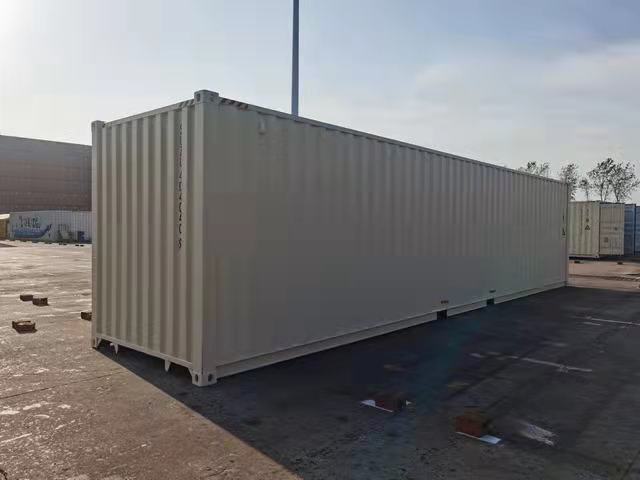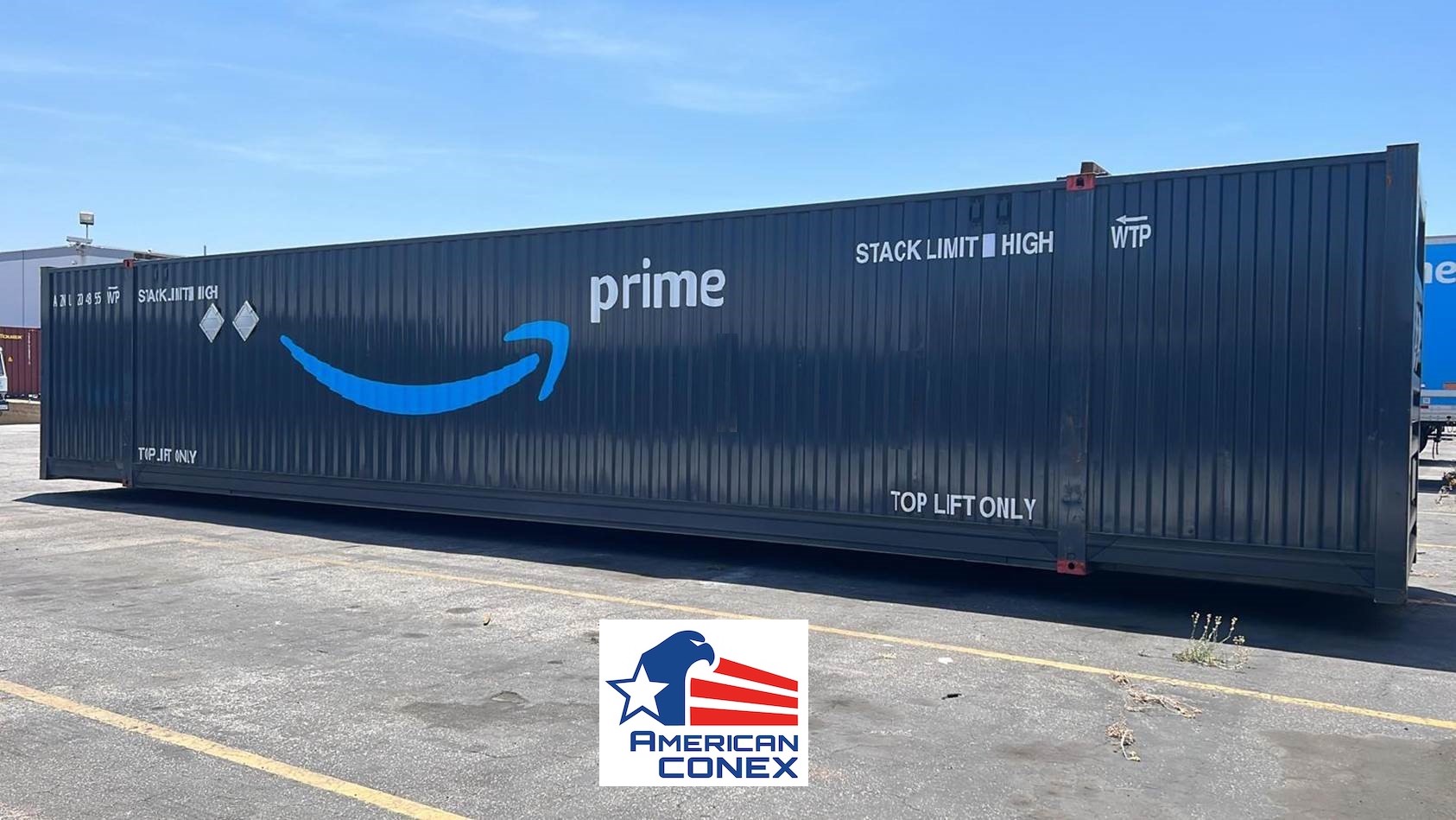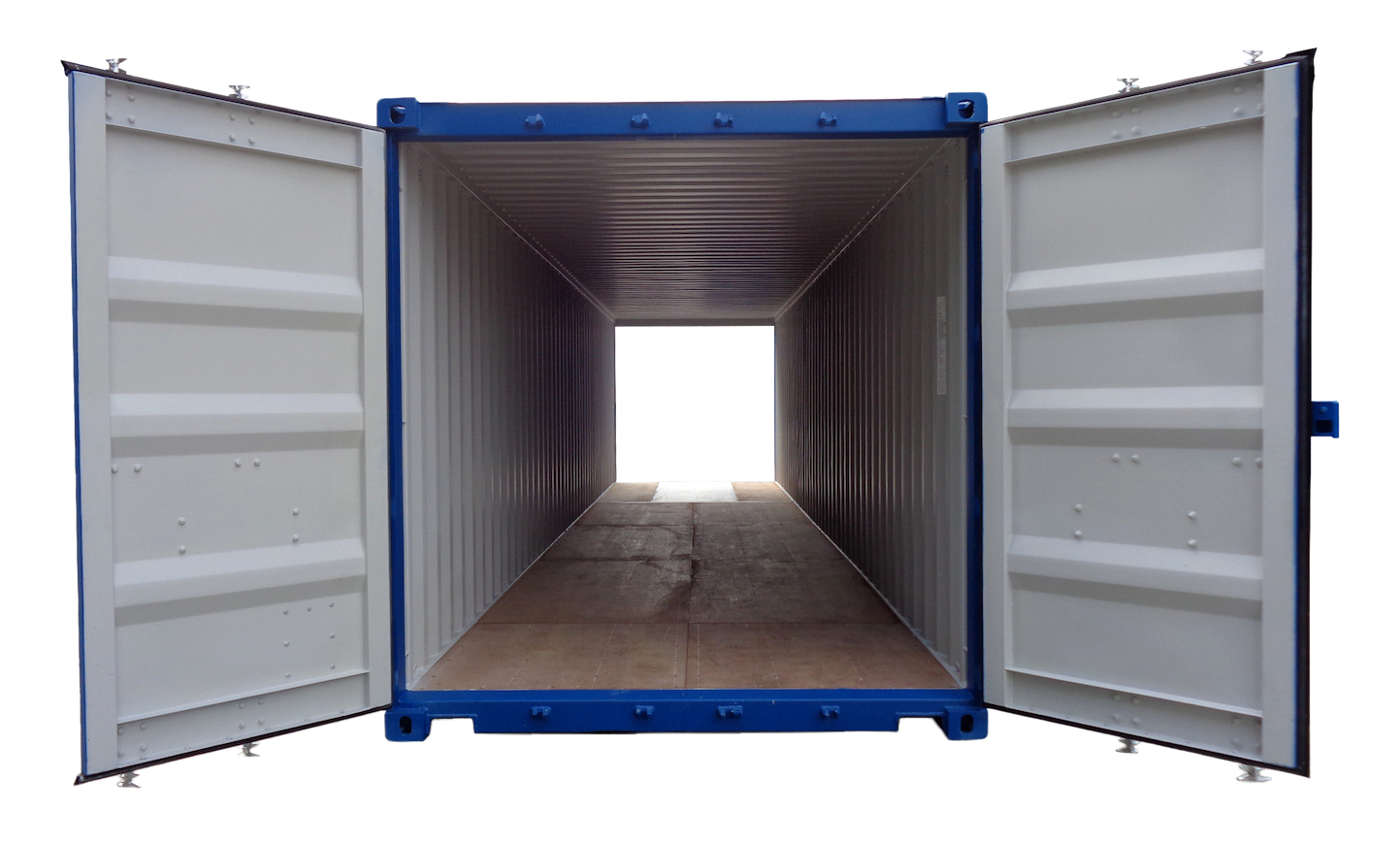Planning a Pop-Up Shop? Lease New Shipping Container 40 x 8 x 9.6 Like This Brand Did
Planning a Pop-Up Shop? Lease New Shipping Container 40 x 8 x 9.6 Like This Brand Did
Blog Article
The Ultimate Guide to Selecting the Right Shipping Container for Your Demands
When it pertains to selecting the appropriate shipping container, understanding your certain demands is essential. You'll wish to take into account elements like size, kind, and material to guarantee you make the very best choice. From conventional dimensions to specialized alternatives, there's a lot to explore. And also, budgeting for both the container and any adjustments can make a large distinction. Let's break down the essential facets to help you discover the ideal fit for your requirements.
Comprehending Shipping Container Sizes
When you're selecting a shipping container, understanding the different sizes available is crucial for making the ideal decision. Delivering containers commonly come in basic sizes of 20 and 40 feet, yet you'll likewise locate other dimensions. Understanding the dimension you require relies on what you plan to store or transport.If you're relocating smaller products, a 20-foot container could be suitable, while larger shipments usually require a 40-foot container. The elevation can likewise vary; high dice containers supply added vertical space, which can be valuable for taller goods.Before determining, measure your freight, and consider exactly how much room you'll require for filling and dumping. Always consider prospective future demands-- choosing for a slightly bigger container might save you headache down the line. Eventually, selecting the ideal dimension will certainly boost performance and guarantee your products are secure during transit
Kinds Of Shipping Containers Available
There are several kinds of delivery containers available, each developed for particular purposes and freight requirements. The common completely dry container is flexible, perfect for general cargo. If you're shipping disposable goods, consider a cooled container, which maintains a controlled temperature level. For large items, high cube containers use added height, accommodating taller loads.If you need to carry heavy equipment or equipment, flat shelf containers offer a sturdy base without walls. At the same time, open-top containers permit for very easy loading of high freight, with a detachable tarpaulin covering for protection. If you're seeking adaptability, think about a retractable container that can be easily stored when not in use.Lastly, specialized containers like tank containers are used for fluids, while vented containers are designed for bulk cargo that needs air flow. Recognizing your cargo kind will aid you pick the appropriate container to fulfill your shipping requires successfully.
Product Factors To Consider for Resilience
When picking a shipping container, the material plays a vital function in its resilience. You'll wish to weigh the advantages of steel versus light weight aluminum, especially pertaining to deterioration resistance. Comprehending these elements can help you make a much more enlightened choice for your shipping needs.
Steel vs. Aluminum Containers
Exactly how do you choose between steel and light weight aluminum containers for your delivery needs? Start by taking into consideration toughness. Steel containers are durable and offer exceptional stamina, making them optimal for hefty lots and rough conditions. They resist damages from influences and are often less costly, which can be a significant variable for budget-conscious buyers.On the various other hand, light weight aluminum containers are light-weight, which can save you on delivery expenses. They're easier to navigate and are a wonderful option if you need to carry products frequently. Nevertheless, light weight aluminum is normally much more pricey and much less durable than steel. Weigh your certain requirements very carefully, including weight, cost, and the kind of cargo you'll be delivery, to make the ideal selection for your situation.
Deterioration Resistance Variables
Selecting the best product does not simply entail weight and cost; corrosion resistance plays a substantial function in resilience. When picking a shipping container, think about the environment it'll deal with. Steel containers, while strong, can corrosion otherwise properly treated. Try to find alternatives with protective coatings or galvanization to improve their life expectancy. Aluminum, on the other hand, provides natural deterioration resistance, making it ideal for seaside locations or damp conditions. It can be extra pricey. Additionally, assess the container's usage-- if it'll be subjected to chemicals or rough weather condition, prioritize products that can stand up to these conditions. Spending in a corrosion-resistant container now can conserve you from expensive fixings or substitutes down the line. Select sensibly for long-term advantages.
Modifications and Personalization Options
Shipping containers aren't just for carrying items; they can be changed to satisfy your specific needs through different modifications and modification options. You can transform a common container into a comfortable workplace, a short-lived retail store, or perhaps a personal health club. The possibilities are almost endless.Think concerning adding home windows, insulation, or air flow to boost convenience. You might additionally think about electrical circuitry, pipes, or perhaps custom-made shelving to improve performance. If safety's a worry, reinforced locks can offer tranquility of mind.For aesthetic appeal, you can paint the container or add a special design to make it stand apart. Don't neglect concerning flooring alternatives-- whether you want sturdy plywood or something a lot more advanced, it can boost the navigate to this site space.Ultimately, tailoring your shipping container to match your demands can improve use and produce an unique setting that reflects your design.
Analyzing Your Transport Requirements
When it pertains to utilizing your modified delivery container, recognizing your transport requires is vital. Beginning by identifying what you'll be shipping-- whether it's heavy equipment, retail items, or personal things. Each kind of freight has different requirements regarding dimension, weight, and accessibility.Next, take into consideration the range and mode of transport. Are you shipping in your area, country wide, or internationally? This impacts the container's style and functionality. If you're making use of vehicles, ensure your container fits typical measurements for simple loading and unloading.Additionally, consider transportation conditions. Will your items need special security from climate or temperature level changes? If so, you could need insulation or ventilation attributes in your container.Lastly, evaluate how often you'll be moving goods. Frequent deliveries might require a more long lasting and versatile container to satisfy continuous needs. By dealing with these factors, you'll be well-prepared to choose the appropriate shipping container for your demands.
Budgeting for Your Delivery Container
Establishing a budget plan for your delivery container is necessary for ensuring a smooth investing in process. Initially, determine exactly how much you can manage to invest. Keep in mind that costs can vary considerably based upon size, problem, and kind. New containers commonly set you back a lot more, however used ones can use considerable savings.Next, consider any additional costs you may sustain, such as transport costs, shipment costs, and alterations. If you plan to personalize the container, consider those expenses as well. Research study different vendors to contrast costs and find the best bargain that fulfills your needs.Don' t forget to include any kind of licenses or regulations that might use to your purchase and usage of the container. By plainly describing your budget plan, you'll be better prepared to make informed decisions, ensuring you obtain the appropriate container without breaking the financial institution.
Upkeep and Treatment for Long life
To guarantee your delivery container lasts for several years, regular maintenance is key. Begin by inspecting the exterior for rust, dents, and damages. If you find any type of concerns, resolve them quickly to stop additional deterioration. Tidy the container regularly, both in and out, to eliminate dirt, particles, and web link wetness that can cause corrosion.Ensure the doors seal effectively and lubricate the hinges to prevent corrosion and sticking. If you're using the container for storage, think about including air flow to reduce humidity and mold growth. For added defense, use a rust-inhibiting paint or sealant annually.If your container's situated in a harsh environment, like seaside areas, you might need to enhance maintenance regularity. Maintain an eye on the flooring, also; any indications of wear should be repaired today. With these basic actions, you'll extend the life of your delivery container significantly.
Regularly Asked Concerns
How Do I Locate a Reliable Delivery Container Provider?
To locate a reputable shipping container provider, start by looking into on the internet evaluations, requesting suggestions from pals or industry calls, and contrasting rates. Constantly check their qualifications and warranty they use quality containers that fulfill your needs.

Can I Rent a Shipping Container As Opposed To Buying?
Yes, you can absolutely rent a shipping container rather than buying one. Several distributors supply rental choices, which can save you cash and offer flexibility if you just require it for a short period.
What Permits Are Needed for Container Positioning?

Are Shipping Containers Weatherproof and Suitable for Outdoor Storage?
Yes, delivering containers are generally weatherproof, developed to endure rough conditions. Their durable link building keeps your products protected and dry, making them appropriate for outdoor storage. Just assure correct air flow to stop dampness buildup inside.
How Do I Transfer a Shipping Container Once Acquired?

Report this page